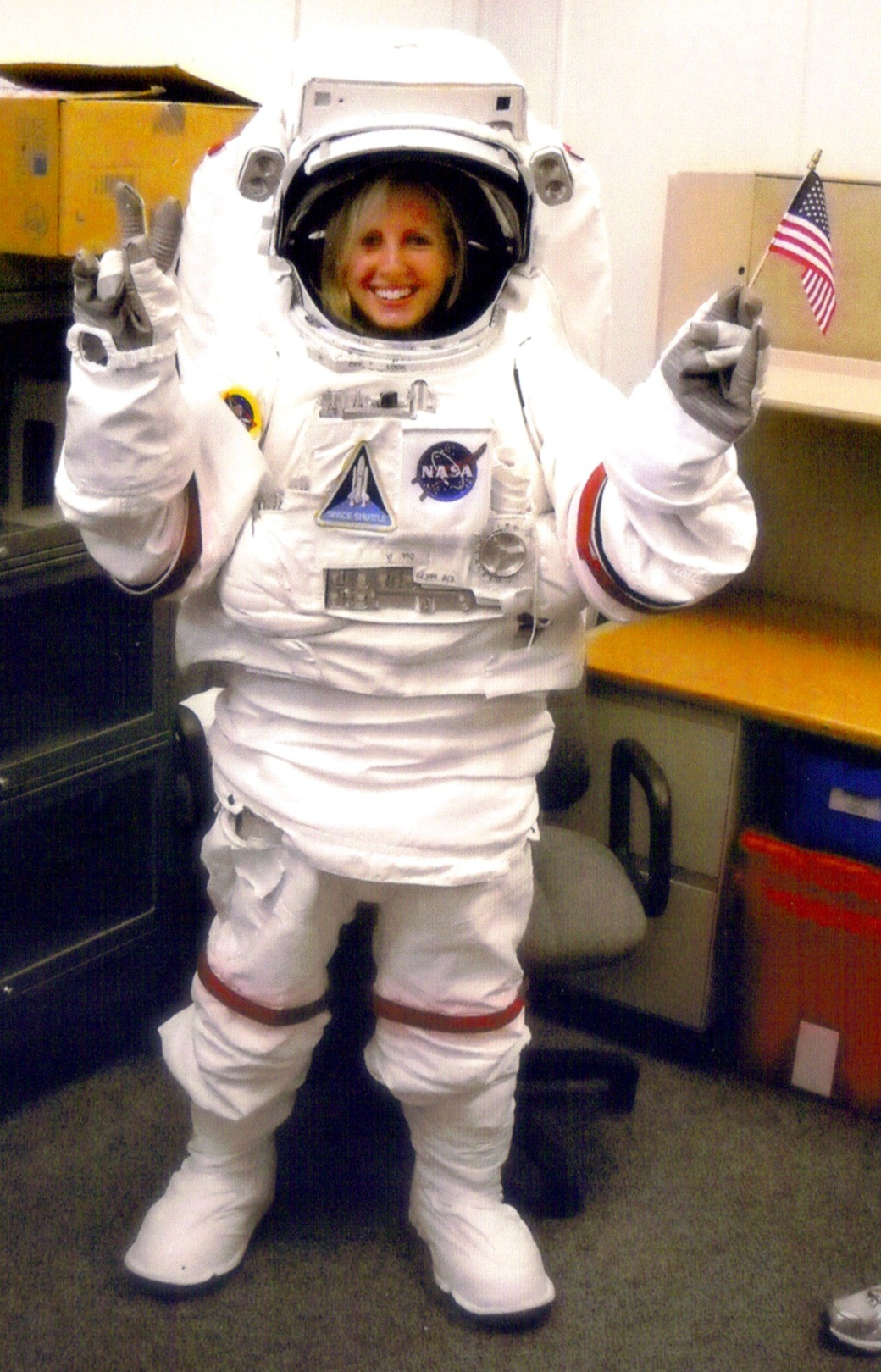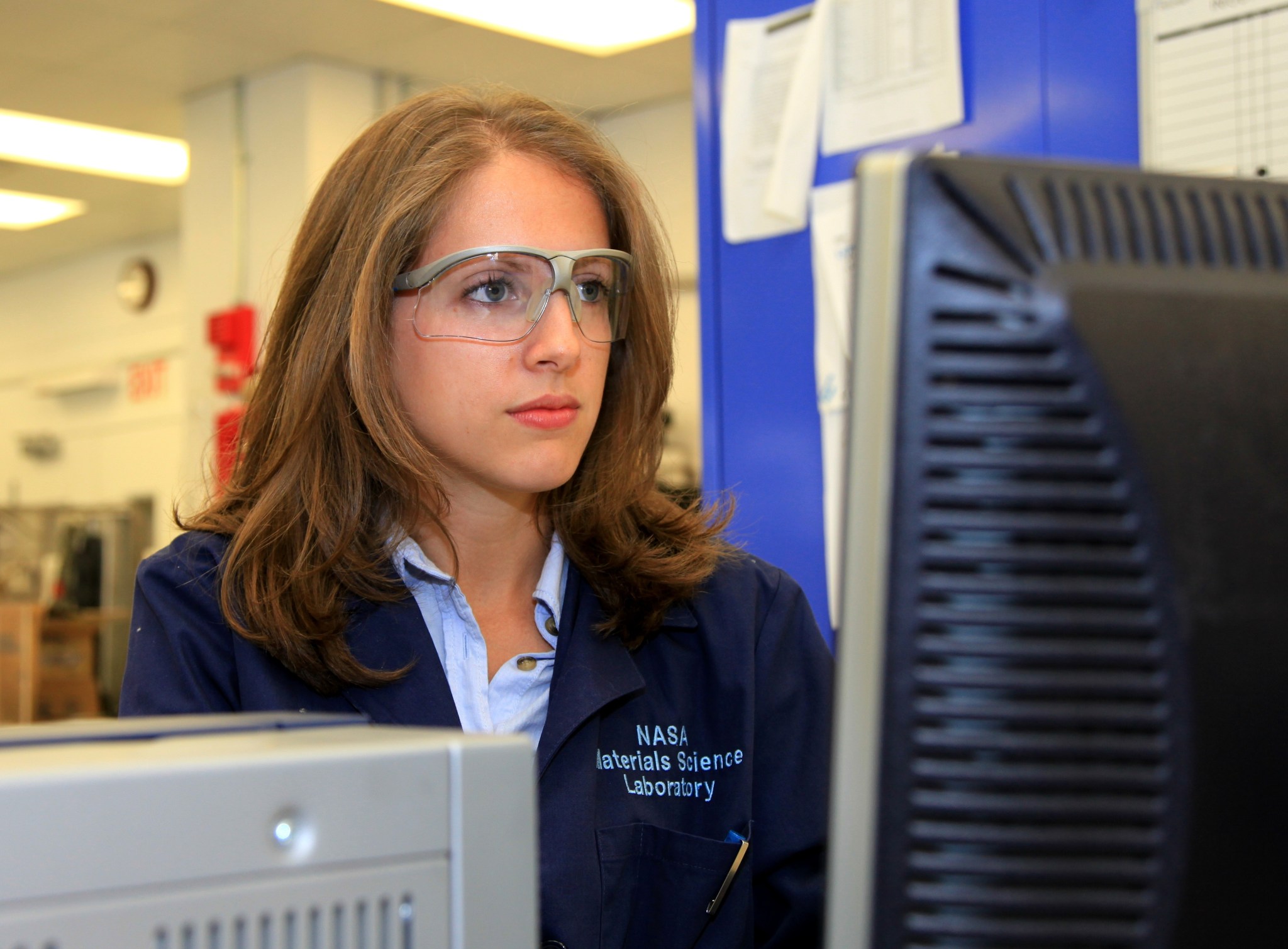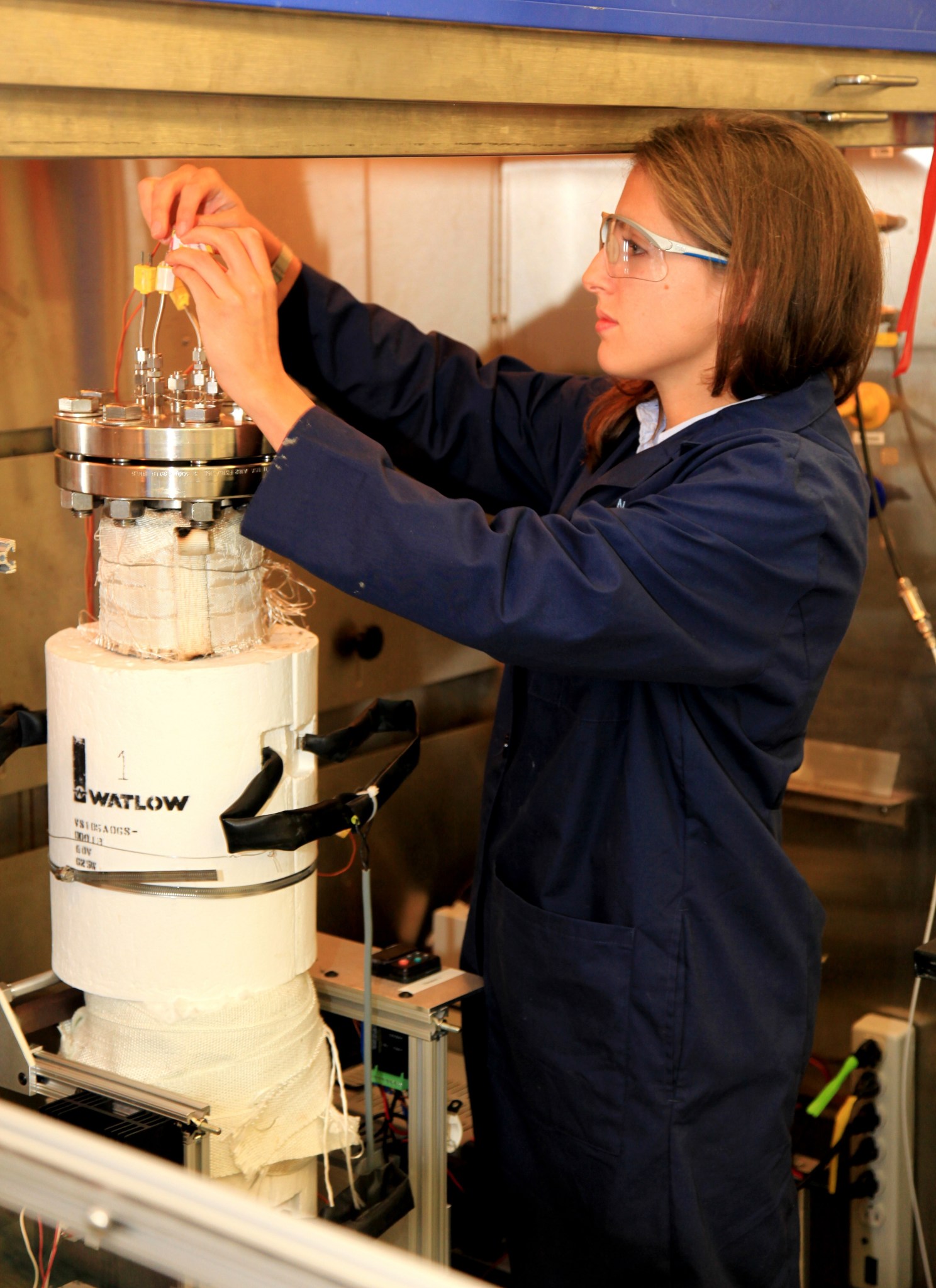Annie Caraccio has been a chemical engineer in the Materials Science Division of the Engineering and Technology Directorate at NASA’s Kennedy Space Center for the past three years. During that time, she has become involved in revolutionary research that may be of value both on Earth and for future explorers living and working on another planet.
“My start date as a full-time employee was Feb. 14, 2011,” she said. “It’s appropriate that it was Valentine’s Day because I love my work.”
Caraccio is part of a team developing a technology that could turn ordinary debris and other garbage accumulated by a crew of astronauts into valuable resources such as methane gas, oxygen and even water using processes that currently are used on Earth.
She is performing human factor assessments of the waste processing technology in a simulated planetary habitat in Hawaii for four months. The goal is to learn how astronauts would operate in a base on Mars.
Caraccio’s career path began in Bellmore, N.Y., a suburb of New York City on the south shore of Long Island. She is the younger of two children. Her father, Thomas Caraccio, is a pharmacist and her mother, Joan Caraccio, who died unexpectedly in 2007, was a nurse.
Caraccio’s first exposure to the Florida spaceport came during a family vacation when she was about five years old.
“I don’t remember much, but I recall being in awe of NASA,” she said. “I knew some really smart people worked here.”
Caraccio explains that her path to a career in engineering started because of her older brother.
“He was a really great role model when I was growing up,” she said. “He received an appointment to the U.S. Military Academy at West Point and he planned to study engineering. That started me thinking about doing the same.”
One of her favorite subjects in high school was chemistry, Caraccio says.
“I had a great high school chemistry teacher whose name was Mr. O’Kane,” she said. “I’ll never forget that great class. What my brother was studying seemed challenging and since I liked chemistry and wanted a challenge, I decided to major in chemical engineering.”
After high school graduation, Caraccio entered Manhattan College in the Bronx, N.Y., which offered what she wanted.
“It was a hard four years, but it really paid off,” she said.
Looking for work experience, Caraccio took a job near Union Square at the Consolidated Edison Company of New York., commonly known to locals as Con Ed, following her sophomore year at Manhattan College. She explained that the company is one of the largest utility companies in the United States providing gas, electric and steam service for much of New York City and Westchester County.
The following year she worked for D&B Engineers and Architects, a leader in environmental engineering and science. The company’s work includes planning, designing and implementing environmental projects.
“The summer I worked there, I was supporting the hazardous waste department with various groundwater and soil cleanup processing projects for ‘Superfund’ type sites,” she said.
Superfund is the federal government’s program to clean up uncontrolled hazardous waste sites.
“Just before graduating with my bachelor’s degree in 2009, I had a chance to go to the Society of Women Engineers National Conference in Baltimore,” Caraccio said. “I talked to the people at a NASA booth and applied for an internship, and I was persistent in following up.”
That determination paid off. Caraccio participated in three semesters of the NASA Co-op Program, working on developing polymers that could repair themselves in Kennedy’s Polymer Science and Technology Laboratory.
“We were developing self-healing insulation systems for electrical wiring to support the space shuttle orbiters,” she said. “It was important to ensure the miles of wiring would work properly even if damaged. It was exciting work because it was a technology that could also aid the commercial sector, including the aviation industry.”
Soon after beginning work at Kennedy, two events convinced Caraccio the Kennedy Space Center is where she wanted to work long term.
“During June of 2010 I had an opportunity to sit in the pilot’s seat of the shuttle orbiter Endeavour,” she said. “Then I watched my first shuttle liftoff from the steps outside the Launch Control Center. The power of that rocket with the vibration reverberating off my chest was awe-inspiring. I then realized I had tears streaming down my face. It was an incredible experience.”
In December of that year, Caraccio graduated from Manhattan College with her master’s degree in chemical engineering. Soon after, she drove her 1995 Mercury Cougar 1,100 miles from the Bronx to Cape Canaveral.
As a chemical engineer, Caraccio now is focusing on developing a reactor to recycle trash during deep-space missions. Unneeded materials such as scraps, wrappers, packaging and other garbage could be converted into methane gas, oxygen and water.
While the term “reactor” is often associated with nuclear energy, in this case it is an apparatus controlling a chemical reaction. The reactor being tested at Kennedy contains more than three quarts of material and burns at about 1,000 degrees Fahrenheit, about twice the maximum temperature of an average household oven. The end result is useful elements.
“Not only will this effort help space missions, but it will also be valuable on Earth. We have enough problems recycling and disposing of our own trash,” Caraccio said.
Caraccio’s experiences have also included participating in center director Bob Cabana’s Reverse Mentoring Program. The effort’s objective is to improve communications at Kennedy. Participants have an opportunity to talk with Cabana individually about center issues and show him their work.
“I had an opportunity to demonstrate how we were developing ways to convert trash to useful gas,” Caraccio said. “The work is very hands on and technical. When I showed him how we did something, he understood and picked it up quickly and knew how to use our specialized tools. He was very interested in our work.”
Caraccio now is part of a six-person crew participating in a long-term human space simulation called “HI-SEAS” for Hawaii Space Exploration Analog and Simulation. The HI-SEAS Habitat is located at approximately 8,000 feet in elevation on the northern slope of Mauna Loa, a volcano on the largest island in the Hawaii Island chain.
“The simulation will run for 120 days,” Caraccio said. “It’s designed to be a Mars equivalent habitat, and I will be performing various research, with the main focus being human factor studies to understand and engineer a flight-like waste processing technology for long duration missions.”

While busy with her career at Kennedy, Caraccio still finds time to volunteer with a local troop of Girl Scouts.
“I work primarily with high school girls,” she said. “I encourage them to consider STEM (science, technology, engineering and mathematics) careers. But, the main thing I tell them is to find a career doing something that they feel passionate about.”
Caraccio is enthusiastic about being a part of NASA’s long-term goal for exploration beyond Earth.
“I love doing research involving technologies that support human spaceflight, especially when many have potential applications here on Earth,” she said. “Given the opportunity to add value and apply the research during a deep-space mission to Mars, I’d definitely like to be a part of it.”




























